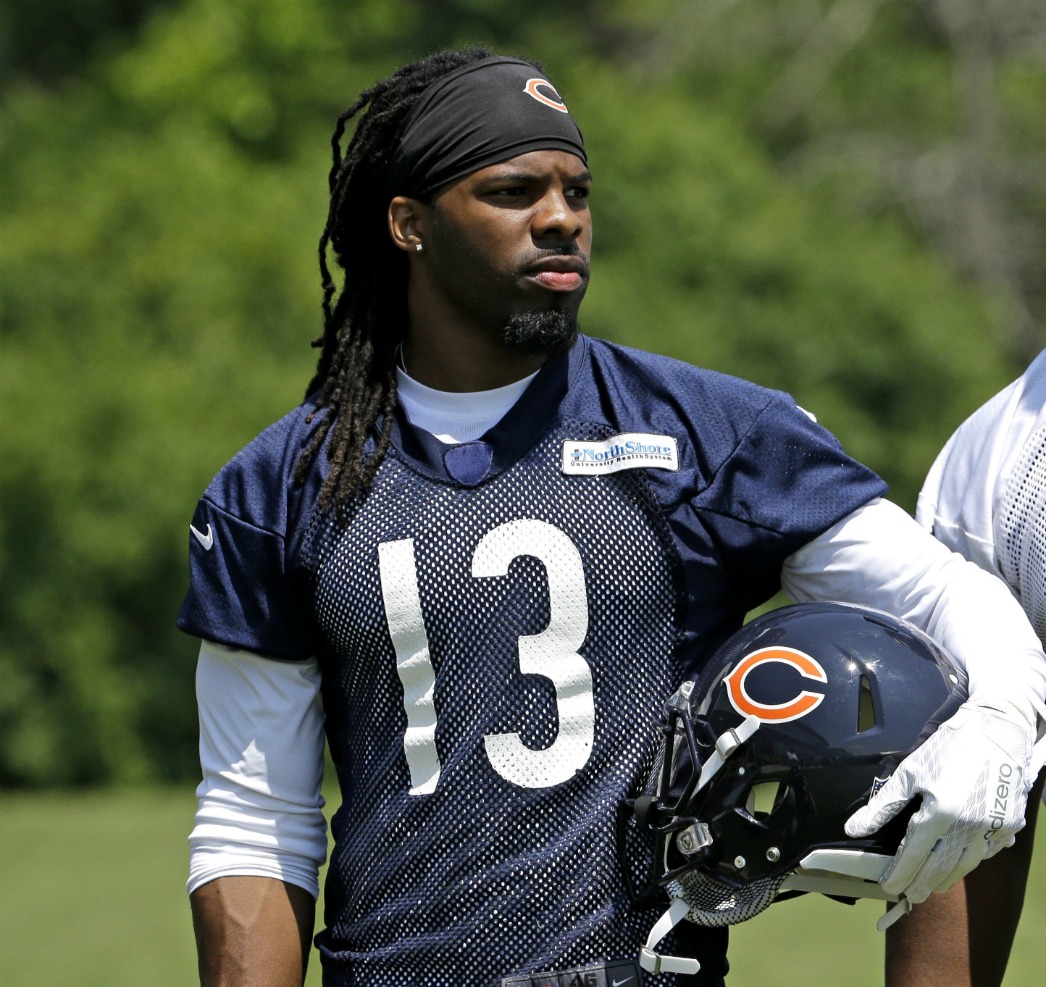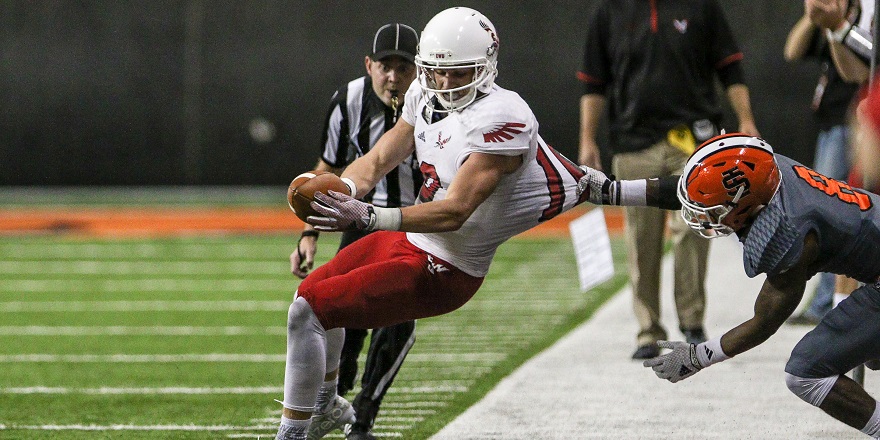Rounds 11 through 16 in a typical fantasy draft can make or break your season. In 2016, you could get Marcus Mariota, Jordan Howard, Davante Adams, and a returning Jimmy Graham in the final rounds of your draft.
Who are this year’s diamonds in the rough? More importantly, how do you evaluate upside when choosing between players at this point in the draft?
Here are nine of the best players that you can get late in your draft who have fantasy starter potential.
Quarterbacks
Andy Dalton, Cincinnati Bengals (Overall ADP: 135, 17th QB)
Last season, Dalton only threw 18 touchdowns, tied with Trevor Siemian for 22nd in the league. However, Dalton also posted 4,206 passing yards, 11th-most in the league, and still finished the season as fantasy QB12. If he had scored only two more touchdowns, he would have been QB8. This is similar to when Matt Ryan only scored 21 touchdowns while putting up 4,591 yards in 2015 before breaking out and scoring the second-most fantasy points in 2016. Low touchdown totals next to high passing yardage totals suggests a potential breakout. Add to that a new running back (Joe Mixon) and a new complement to A.J. Green (John Ross), and there’s a lot to be excited about in Cincinnati. The only stumbling block could be their offensive line. Dalton was sacked 41 times in 2016 on a league-high 22.7 percent of his dropbacks, and lost Andrew Whitworth and Kevin Zeitler in the offseason. Hopefully the Bengals can find a way to protect Dalton and you can get a solid late-round quarterback in your draft.
Join PFF Elite for access to PFF Signature Stats across all positions.
Blake Bortles, Jacksonville Jaguars (169, 22nd QB)
You can take Bortles in the 14th round, just before you take a kicker and/or defense in most redraft leagues. He will cost you almost nothing despite landing in the top-10 fantasy quarterbacks two years running. Bortles worked on his throwing motion over the offseason. The Jaguars drafted Leonard Fournette and want to run more, taking pressure off Bortles and perhaps putting him in a situation where he doesn’t have to throw 40-plus times a game. Losing that volume could hurt his overall fantasy numbers, but it could also help his accuracy and make him a more efficient player. Bortles also put up the fourth-most rushing yards (359) among quarterbacks last season, giving a boost to his fantasy floor. His 69.7 adjusted completion percentage needs a lot of improvement, but it was still higher than both Jameis Winston (69.1) and Marcus Mariota (68.9), both of whom are trendy sleepers and going off the board five to six rounds higher than Bortles.
Running backs
Jamaal Williams, Green Bay Packers (137, 50th RB)
Ah, the great unknown. Last season the Green Bay Packers were in a pickle. Their lead back, Eddie Lacy, was sidelined with an ankle injury and could only play in five games all season. Eventually, the team converted then-WR Ty Montgomery to a running back and mostly relied on the passing game. This year they want more balance. Montgomery is officially a running back, but he still only got double-digit carries in one game during the 2016 regular season. Can Montgomery be a three-down back? Should he? Those are some big questions, but Green Bay decided to get some power back insurance when they drafted Williams from BYU. Not a speed guy, Williams forced 55 missed tackles in 2016, averaged 5.4 yards per carry, only two fumbles on 369 touches and PFF Draft compared him to Frank Gore. Williams and Montgomery could be a strong one-two punch, and you can get Williams much later.
Duke Johnson, Cleveland Browns (184, 57th RB)
Johnson had the fifth-most targets among running backs last season. He caught 53 of his 68 targets for 514 yards. His 1.86 yards per pass route was the second-best among backs with at least 40 targets, behind only James White. The Cleveland Browns went all out and built up potentially one of the best offensive lines in the league, which is why Isaiah Crowell’s ADP has gone from being a sixth-round pick in March to a third-round pick in June. But Johnson’s ADP remains incredibly low. Crowell and Johnson look to be a one-two punch in the backfield on an offense with many question marks at the quarterback position. Especially if you play in PPR formats, Johnson could be the best value in your draft.
Wide receivers
Adam Thielen, Minnesota Vikings (138, 51st WR)
Thielen was the No. 1 wide receiver on the Minnesota Vikings last season. He caught 69 of his 88 targets for 967 yards and five touchdowns. Just shy of a 1,000 yard season, this undrafted pass-catcher from Minnesota State-Mankato landed a $17 million deal through 2020 over the offseason. Stefon Diggs will be the No. 1 receiver if he can stay healthy, but the Vikings will not abandon Thielen. His 78 percent catch rate was the third-best in the league among wide receivers with at least 60 catches on the season, only behind Cole Beasley and Doug Baldwin. He averaged 14.0 yards per reception, 4.4 yards after the catch and went from playing in 35 of the team’s 63 offensive snaps in Week 1 to 61 of the team’s 63 snaps in Week 17. Thielen is here to stay, and a steal in the double-digit rounds of your draft.
Kevin White, Chicago Bears (139, 53rd WR)
Suggesting a player who only has four games under his belt after two years in the league is dicey, but there are some statistical and situational reasons to take a chance on White. Again. First is the Bears’ depth chart. Cameron Meredith emerged last season and led the team with 66 receptions for 894 yards and four touchdowns in 2016. Meredith will start the season as a starter once he fully heals from his thumb injury. After Meredith, the team has a grab bag of receivers consisting of Markus Wheaton, Victor Cruz, Josh Bellamy, etc. The vulnerable depth chart that suggests if the team can lean on White, they will. Frankly, when White did play, he was an opportunities monster. In four games, he caught 19 of his 34 targets for 187 yards. That’s an average of 8.5 targets per game. That’s a lot of targets for the WR53, and it’s that potential production that makes him nice dart throw at this point of the draft.
Cooper Kupp, Los Angeles Rams (188, 66th WR)
When you look over the Rams’ depth chart, no one pops off the page as a go-to pass-catcher. Their new head coach, Sean McVay, was the offensive coordinator for the Washington Redskins, a team that threw on 61.56 percent of their plays, seventh-most in the league. Someone will emerge as Jared Goff’s safety valve, and it could very well be the rookie Kupp. Tavon Austin spent the spring on the sidelines with a wrist injury, so other receivers got a chance to shine. Kupp impressed in the slot during offseason practices. Kupp isn’t a burner (4.62-second 40-yard dash), but he’s reliable. During his time at Eastern Washington, he won the Jerry Rice Award (outstanding FCS freshman) in 2013 and the Walter Payton Award (outstanding offensive FCS player) in 2015, and in 13 games in 2016 he caught 117 passes for 1,700 yards and 17 touchdowns. He holds the FCS all-time records for total receptions (428), receiving yards (6,464) and receiving touchdowns (73). Here at PFF he received praise for his strong hands, ability to get open, and intelligence. He is the definition of an upside late-round pick.
Tight ends
Zach Ertz, Philadelphia Eagles (130, 12th TE)
In 2016, Ertz played in 14 games. During his first seven games, he couldn’t score even one touchdown and garnered 37 or fewer yards in four outings. However, from Week 11 onward he was the highest-scoring tight end in the league. He caught 49 passes for 514 yards and four touchdowns. Over the course of the season, he only dropped two of his 101 aimed targets. That reliability matters to a young quarterback, and there are reports out of camp that the Carson Wentz/Ertz connection was evident. Ertz has been a top-10 tight end over the last two seasons in both standard and PPR leagues, but he’s going off the board later than that.
Coby Fleener, New Orleans Saints (156, 15th TE)
Fleener struggled during his first season with the Saints. Changing offenses was a difficult adjustment, but Fleener and coach Sean Payton have said they are also encouraged by how much farther along he is with the offense going into his second year with the team. With the departure of Brandin Cooks, there are a lot of targets on the table, especially down the field. Cooks led the Saints last season with 24 targets of 20 yards or more. And when you look over Fleener’s stat lines from last season, he struggled mightily except when it came to the deep pass. In fact, Fleener tied former Saint Jimmy Graham for the most targets (14) and catches (8) of 20 yards or more among tight ends. Fleener was the sole position leader with 249 yards generated on deep passes. He’s almost no risk at his current ADP.





 © 2025 PFF - all rights reserved.
© 2025 PFF - all rights reserved.